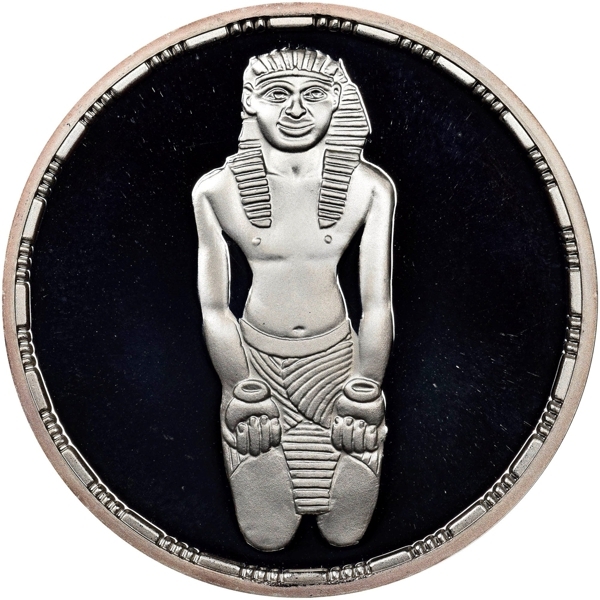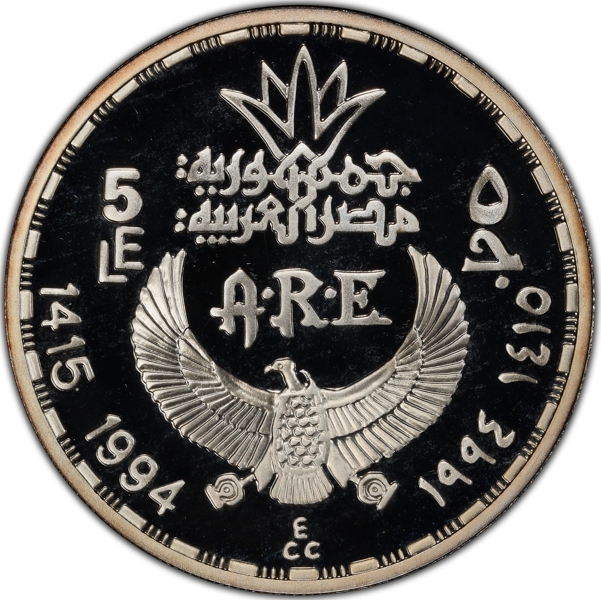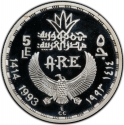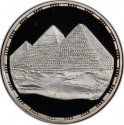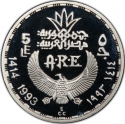You are about to finish your registration. Please check your mailbox (including spam folder). There should be a letter with a confirmation link. Check setting to make sure that your e-mail address is correct.
Send letter againDescription
Pepi I Meryre (also Pepy I) was an ancient Egyptian pharaoh, third king of the Sixth Dynasty of Egypt, who ruled for over 40 years at the turn of the 24th and 23rd centuries BC, toward the end of the Old Kingdom period. He was the son of Teti, the founder of the dynasty, and ascended the throne only after the brief intervening reign of the shadowy Userkare. His mother was Iput, who may have been a daughter of Unas, the final ruler of the preceding Fifth Dynasty. Pepi I, who had at least six consorts, was succeeded by his son Merenre Nemtyemsaf I, with whom he may have shared power in a coregency at the very end of his reign. Pepi II Neferkare, who might also have been Pepi I's son, succeeded Merenre.
Obverse

|
Depicts King Pepi I kneeling and offering nu-pots, ritual vessels that held milk or wine. A king would kneel only before a god, so this statuette must have been placed before the statue of a deity in a temple. Inlaid eyes of black and white stone set in copper rims enhance the finely carved figure. The hole above Pepi’s forehead originally held a uraeus-cobra, probably metal, signifying royalty. |
|---|---|
Reverse

|
Stylized state name (Arab Republic of Egypt) divides denomination in Arabic and English and abbreviation of state name (A.R.E.) below, the date in Arabic (Hijri) and Western (Georgian) divides by a vulture with open wings. Engraver's initials (ECC) below. 5 ٥ جمهورية مصر العربية |
| Edge |
5 Pounds
Pharaonic Treasure / Ancient Egyptian Art
Pharaoh Pepi I Meryre
Subscribe series
KM# 748 Schön# 476
Pharaonic Treasure / Ancient Egyptian Art
Pharaoh Pepi I Meryre
